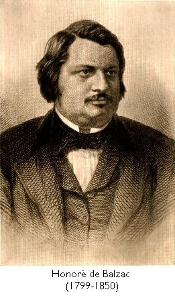
14 Jul 2010
von Waltershausen: Oberst Chabert
Oberst Chabert (Colonel Chabert): Tragic opera in 3 acts.
Mozart and Salieri, an opera in one act consisting of two scenes.
Nicolai Rimsky-Korsakov (1844-1908), composer. Libretto derived from Alexander Puskhin's play of the same name.
First performance: 7 December 1898 in Moscow.
Ariadne auf Naxos, Oper with a prologue and one act. Music composed by Richard Strauss. Libretto by Hugo von Hofmannsthal.
La Vestale, a tragédie lyrique in three acts.
Boris Godunov, an opera in four acts with prologue
Modest Mussorgsky, composer. Libretto by the composer, based on Alexander Pushkin's drama Boris Godunov and Nikolai Karamazin's History of the Russian Empire
First performance: 8 February 1874 at the Mariinsky Theatre, St. Petersburg
Il Trovatore, dramma in four parts.
Only a few months following the premiere of Der Rosenkavalier, Hugo von Hofmannsthal proposed a new opera to Richard Strauss based on Molière’s comedy-ballet, Le Bourgeois gentilhomme (in German, Der Bürger als Edelmann).
Die Entführung aus dem Serail, Singspiel in 3 Acts.
Music composed by Wolfgang Amadeus Mozart (1756–1791). Libretto by Johann Gottlieb Stephanie the Younger, based on an earlier libretto by
Christoph Friedrich Bretzner.
Die Entführung aus dem Serail, Singspiel in 3 Acts.
Music composed by Wolfgang Amadeus Mozart (1756–1791). Libretto by Johann Gottlieb Stephanie the Younger, based on an earlier libretto by
Christoph Friedrich Bretzner.
Arabella: Lyrische Komödie in three acts
Die Entführung aus dem Serail, Singspiel in 3 Acts.
Music composed by Wolfgang Amadeus Mozart (1756–1791). Libretto by Johann Gottlieb Stephanie the Younger, based on an earlier libretto by
Christoph Friedrich Bretzner.
La Gioconda, dramma lirico in four acts.
Music composed by Amilcare Ponchielli (1834–1886). Libretto by Arrigo Boito (under the pseudonym Tobia Gorrio), based upon Victor Hugo's Angelo, Tyrant of Padua (1835).
Don Carlo, an opera in four acts. Music composed by Giuseppe Verdi (1813–1901). Libretto by Joseph Méry and Camille Du Locle after Friedrich von Schiller’s dramatic poem Don Carlos, Infant von Spanien. Revised version in four acts (French text revised by Du Locle, Italian translation by Achille de Lauzières and Angelo Zanardini).
Un ballo in maschera, a melodramma in three acts.
Music composed by Giuseppe Verdi. Libretto by Antonio Somma, based upon the work of Eugène Scribe Gustave III ou Le bal masqué (1833)
Medea: Melodramma tragico in three acts.
Die Tote Stadt, an opera in three acts.
Music composed by Erich Wolfgang Korngold (1897-1957). Libretto by Paul Schott (Julius and E. W. Korngold) after the novel Bruges la morte by Georges Rodenbach.
Some Details concerning the Revolution inaugurated by Rossini
Manon Lescaut, dramma lirico in quattro atti
Elektra: Tragedy in one act.
Lyric Opera of Chicago has announced both schedules and cast-lists for is Spring 2020 performances of Richard Wagner’s Ring Cycle. Given the series of individual productions already staged by the company since Fall 2016, that pave the way for the complete cycle, Lyric Opera of Chicago’s complete production should affirm the artistic might of the great composer.
“Diacono himself does not know what musical talent he possesses” – Mascagni

Oberst Chabert (Colonel Chabert): Tragic opera in 3 acts.
Music composed by Hermann Wolfgang von Waltershausen. Libretto adapted by composer from La Comtesse à deux maris by Honoré de Balzac.
First performance: 18th January 1912, Frankfurt am Main.
Click here for background information.
Plot Summary:
The novella opens with clerks in the Paris law office of Derville, an attorney, looking out the window and mocking a determined old man walking through the streets. Le Colonel Chabert is famous for its in medias res opening.
Colonel Chabert marries Rose Chapotel, who was living a modest life. Colonel Chabert then becomes a French cavalry officer who is held in high esteem by Napoleon Bonaparte. After being severely wounded, in the Battle of Eylau (1807), Chabert is recorded as dead and is buried with other French casualties. Though he does survive—after extricating himself from his own grave—and is nursed back to health by local peasants, it takes several years for him to recover. After he recovers, he returns to Paris and discovers his “widow” has married the wealthy Count Ferraud. She has also liquidated all of Chabert’s belongings. Seeking to regain his name and monies that were wrongly given away as inheritance, he hires Derville, an attorney, to win back his money and his honor. Derville, who also represents the Countess Ferraud, warns Chabert against accepting a settlement bribe from the Countess. In the end, Chabert walks away empty handed from his widow and spends the rest of his days at a hospice.
In Le Colonel Chabert Balzac juxtaposes two world-views: the Napoleonic value-system, founded on honour and military valour; and that of the Restoration. Chabert was not killed at the Battle of Eylau, though it was thought that he was. He struggles back to life but cannot reclaim his identity. His “widow”, who is actually his wife, and who fittingly was a prostitute in her early adult years, is now the Comtesse Ferraud, married (or so it would seem) to an important Restoration nobleman and politician. She repudiates her “former” husband (just as Ferraud, in changed political circumstances, would now be happy to repudiate her). All that matters in the modern era is social rank based upon the possession of money, especially inherited wealth.
This theme of the trenchant purity of the military way of life is something to which Balzac returns in La Rabouilleuse, but there the subject is treated quite differently.
[Plot Summary Source: Wikipedia]
The above link to streaming audio is a playlist in m3u format. There are three files in this playlist. If you have problems accessing all of these files, use the following links to the individual acts: